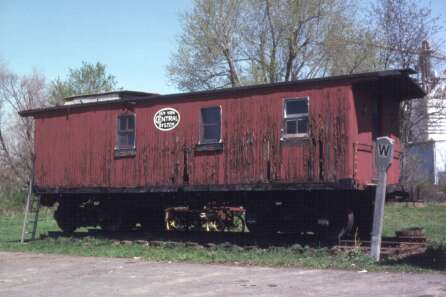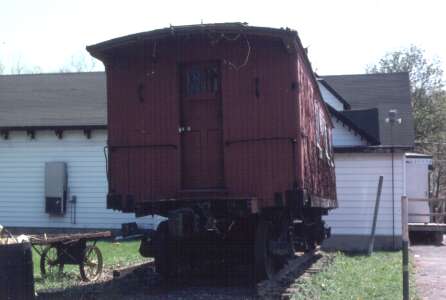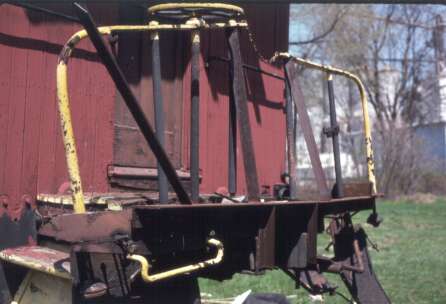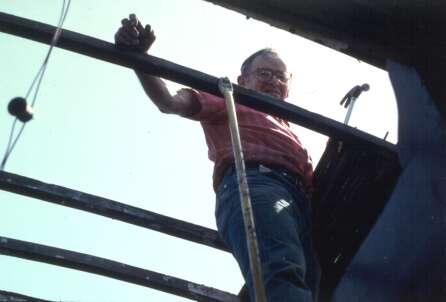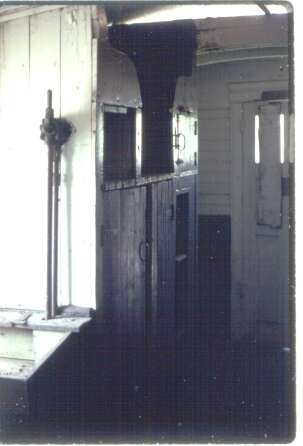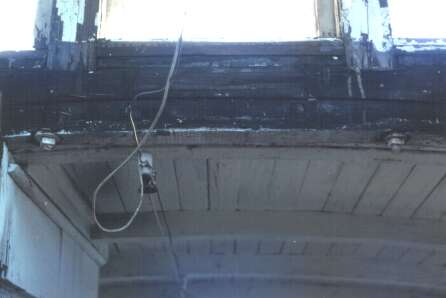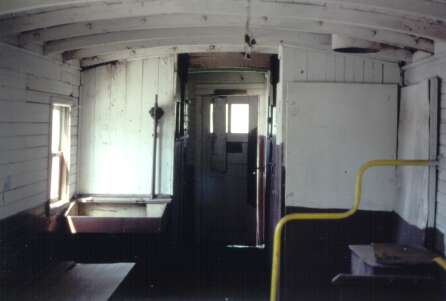How We Found It
![]()
Ok, you've got to have a real love of trains to want to bring something like this home. New York Central car number 19520 was built sometime during WWI in the company shops, likely in Oswego. It was in RR service until the mid-1960s, at which time it was transferred to the Chatham County Fair where it sat on the fairgrounds. Chatham, NY had a rich RR history, with five different lines converging in the town. I found the caboose outside a bar & grill, looking much the worse for wear. It had become both an eyesore and a safety hazard, and local youths had kicked the door in so they could use it as a party spot. The owners were anxious to get it out of their parking lot.
This was the worse off of the two sides. This photo was taken after the cupola was removed. The photos on this page were taken before the move. Click an image to see a larger version.
Sight along the side and you can see how the end of the caboose was twisted.
There was not much left of the end platforms, but having the iron work for restoration was a real score. You can see that the steps on the far side had snagged on something at one time and sustained damage.
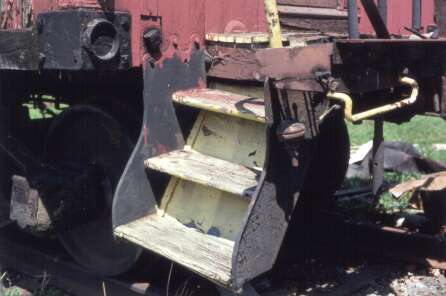
This set of steps is straight. Two other sets of steps were off the car, but intact.
Here's my dad pulling off rotted cupola boards. The caboose had been reroofed with roll roofing after leaving the railroad's care, but the roofers had skipped the cupola. By the time we got to it, the canvas had rotted right through, so the cupola was only useful as a pattern for replacement pieces. This was actually a blessing, as the cupola had to be removed anyway and attempting to save it would have been a more difficult proposition than just pulling it off.
Here we are inside the caboose, looking away from the cupola. You can get an idea of how twisted the cabin was. I was able to straighten it up pretty well after the siding was off by hooking to the top sill and winching it back toward a nearby tree. Letting it sit like this for a few months and adding bracing to the end squared it up nicely.
You can see the benches that line both sides. These were originally covered with padded vinyl cushions. The tops of the benches swing up to allow storage underneath. At various times, the interior had been painted white, elephant-wallow gray, and the most awful color yellow that you can imagine. I am partial to the two-tone brown & white it currently carries.
Another interior view, this one facing toward the cupola. the lever is an airbrake control. The conductor or brakeman could move the lever to bleed off air pressure, causing the brakes to engage. The air guage is missing. The corner of the conductor's desk is visible below the airbrake control. Above the cabinets, you can see the ends of the cupola seats. these
The cupola is bolted through a double set of roof bows, sandwiched around a curved steel brace. The wiring was added for lighting, when the caboose was a display at a local fair in the '60s.
Another interior view, looking toward the cupola. The yellow bar on the right was designed to keep railroaders from being thrown against a hot coal stove, should the caboose suddenly lurch. Behind the bar you can see the heat shields, the roof jack for the stovepipe, and the coal hopper, still containing coal! Someone had taken the stove, but I have since found another stove that was used in a similar caboose on the Rutland Railroad. The holes in the base of the stove line up perfectly with the holes in the floor of the caboose! The Rutland purchased some of these cabooses from the New York Central, so it may very well have been the same model that was in 19520 while it was in service.
Last edited 12/31/2019
By Steve Barner,

